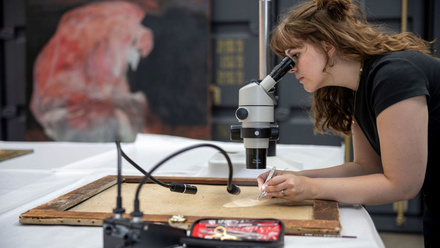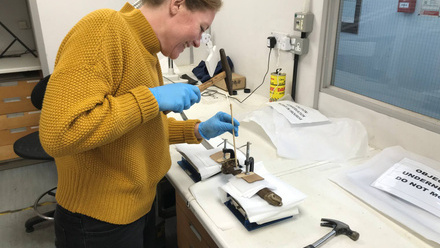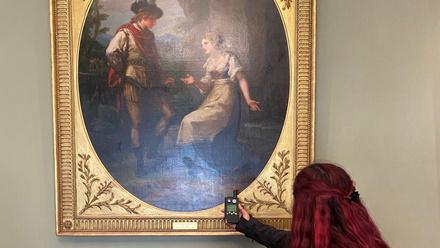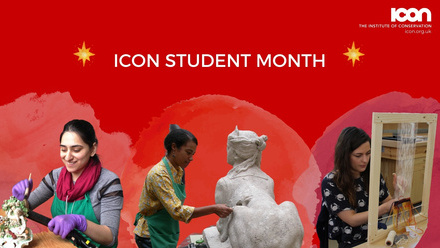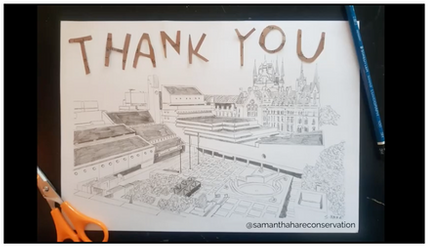From October 2022 until March 2023, I had the opportunity to be the Icon Clare Hampson Book and Paper intern. My internship was divided in two; my first three months at the Bodleian Libraries and the remaining three at Oxford Conservation Consortium (OCC).
Arriving at the Bodleian, I met my supervisors: Robert Minte from the Bodleian, Celia Bockmuehl from OCC, and Helen Lindsay my Icon advisor. Together we discussed the aims of the internship, what was expected on my end and what activities we hoped to achieve during the short time period of six months.
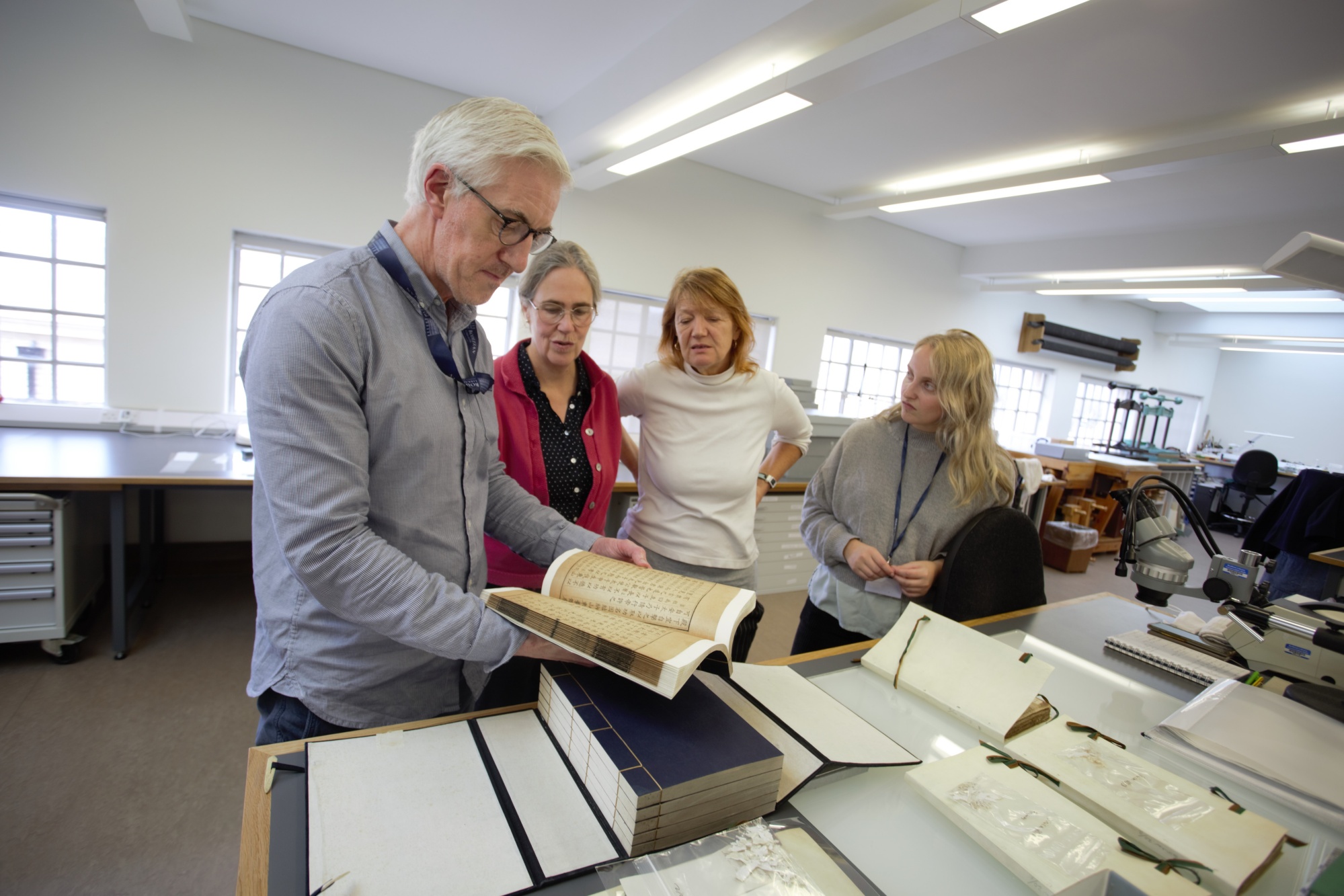
Robert Minte, Celia Bockmuehl, Helen Lindsay discussing practical projects with me
With a loose schedule in hand, I set to work on various practical projects. Namely, the conservation of three Ming Dynasty Chinese fascicles which I worked on with Robert, and a collection of 19th century tracing paper maps which was supervised by my colleague Julia Bearman.
These projects were relatively long, with both projects extending over the three months that I was at the Bodleian. I had ample opportunity for research and experimentation, particularly with the Chinese fascicles, which contained structural and material qualities with which I was completely unfamiliar.
For example, the Chinese papers used in the bindings were extremely short fibred and reactive to moisture, meaning repairs needed to minimise moisture introduction and have sufficient drying time underweight.
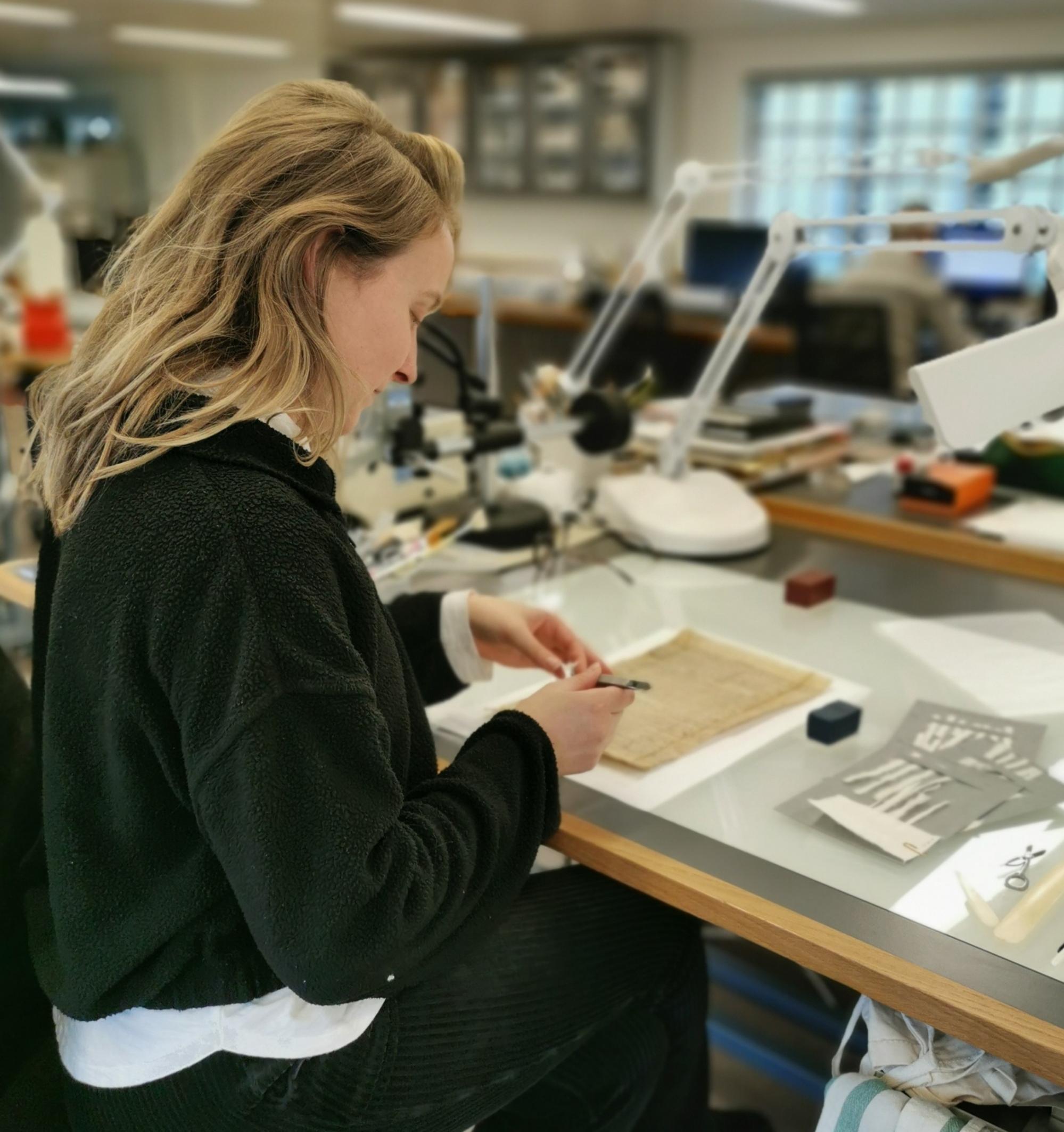
Repairing the original covers
The fascicles had all been re-bound into western bindings, which we decided to remove as part of the conservation treatment. Evidence showed that the bindings were originally bound as traditional Chinese ‘rough’ bindings, a temporary form of binding that utilises paper twists to secure the leaves in place. We successfully re-bound the fascicles into this format, giving them a more sympathetic look and feel to what they would have originally been like.

Steps for inserting traditional Chinese 'paper twists' into original binding holes, securing with a double knot
I also spent some time with other departments, including the preventive team where I identified insects in pest traps and encapsulated photographs with the team of volunteers. With the exhibitions team I helped with various tasks, including profiling and installing books for cradles as well as assisting with the changeover of a large-scale exhibition on early photography. Frequent lectures and presentations (including the weekly ‘Scholar’s Coffee’ in which researchers are invited to discuss items from the collections) contributed to the engaging learning environment of working in a large library. Exhibitions, events, and tours allowed for plenty of interaction with the public, and it was nice to see how valued the collections are beyond the conservation bench.
After what felt like no time at all, I was headed off to my next adventure. Although less than half a mile away, OCC felt like a very new beginning and required me to re-learn the general workings of a conservation studio. Although similar in ethos and approach, subtle things like material preferences, storage methods and tea times all take time to absorb. The warm and welcoming team at OCC had me well settled in no time. My scheduling had a similar approach to the Bodleian, with various practical projects pencilled in, leaving enough wiggle room for spontaneous opportunities to present themselves along the way.
At OCC there was a high volume and variation in practical work. In just three months I tackled four main practical projects and helped with four ongoing projects, including participating in a visual survey. This way of working required me to manage my time carefully and multitask whilst it also gave me an insight into how budgets and timings impact on the workflow of a conservation studio.
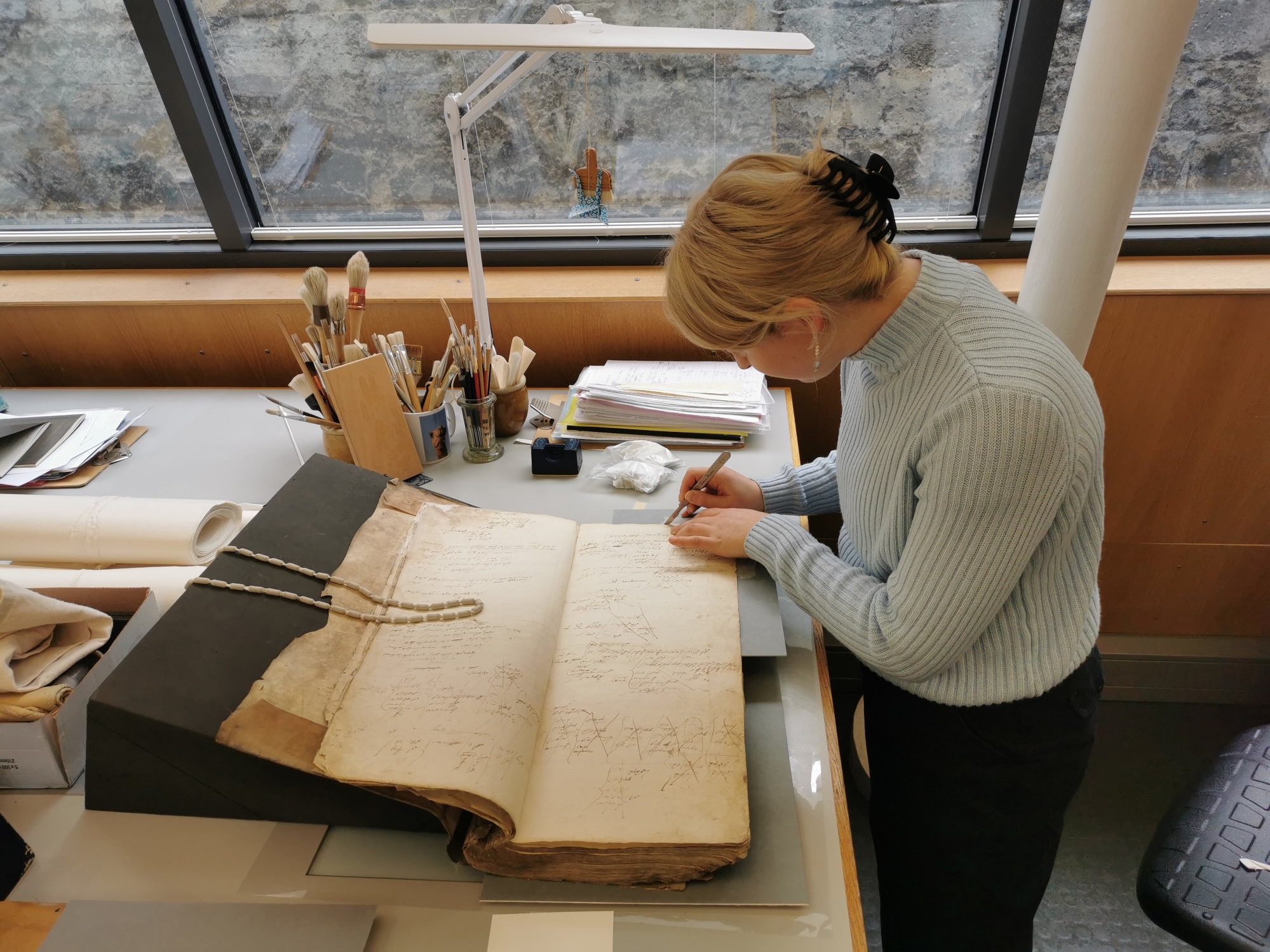
Repairing the textblock
I worked on each project alongside a different member of the team, valuing the opportunity to observe their expertise and judgement as well as picking up technical tips and tricks. I added lots of new and exciting treatments to my repertoire, including re-sizing mould damaged paper, mounting and framing of works of art and using nano cellulose to repair tracing papers. A particularly interesting project for me was an early 17th century account style binding, known as a ‘Buttery Book’ from Balliol College which I worked on with my colleague Nikki Tomkins. The condition of the binding was extremely poor, with mould damage and significant surface dirt throughout. The treatment required extensive cleaning, resizing and repair to much of the text block and the complete re-shaping of the spine, which had deformed over time effecting the opening of the binding. This was done using a combination of humidification and linings.
As my time in Oxford has come to a close, I have had the opportunity to reflect on the internship and think about what it will mean for me moving forward.
Firstly, I have hugely increased my confidence in my practical skills. Trying out new approaches, techniques and materials has widened my breadth of knowledge and ability. Learning from the highly skilled conservators around me has been an invaluable part of the internship.
I also have gained a true insight into the working or ‘real’ world of conservation. Before this, I had only experienced conservation in an educational context and in shorter term placements. Having this time as part of each team really gave me a sense of what it is like to be in the profession of conservation and what soft skills I can work on too.
Additionally, I have grown as a person, taking on the challenge of moving to new city and joining two different workplaces in such a short amount of time. I have increased my ability to be flexible, and I have a developed a stronger mindset, with a ‘grit’ and determination to continue down the path of becoming a professional and accredited conservator.
And last but not least, I have made what I hope will be lifelong connections in the field. My supervisors, Robert and Celia, as well as my ever-supportive colleagues have made the experience a joy, with plenty of insightful conversations (and laughs!) along the way. I would like to thank everyone at the Bodleian and OCC, Icon and my advisor Helen and the Clare Hampson Fund for making the internship possible.

